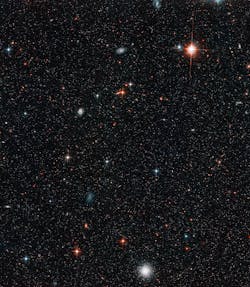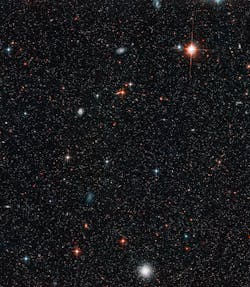HVAC in Popular Movies: Did Hollywood Get It Right? 'Andromeda Strain' Edition
Editor’s note: Hollywood long has been known for—ahem—taking liberties with the truth (just ask any composite character). In HPAC Engineering’s ongoing series “HVAC in Popular Movies: Did Hollywood Get It Right?," Ron Wilkinson, a professional engineer who moonlights as a film critic, takes a look at movies and television series whose makers may or may not have let HVAC fundamentals get in the way of a good story.
The Andromeda Strain (1971)
In this science-fiction thriller based on Michael Crichton's 1969 novel of the same name, an elite team of scientists (Arthur Hill, James Olson, Kate Reid, and David Wayne) is summoned to a secret underground laboratory to study a deadly extraterrestrial organism that wiped out an entire town save for two people: a 62-year-old Sterno drinker and a 6-month-old child. What could they have in common that allowed them to survive?
As the scientists descend the lab’s five levels, they undergo a day’s worth of decontamination procedures. When they reach the bottom, it is time to jump into the isolation chamber, complete with some very serious-looking space suits and, yes, bio-proof flex duct. As the flex duct shakes and wobbles, the team’s doctor (Olson) tends to the survivors of the alien germ.
After intense study and analysis, the team finds the solution is, yes, rapid breathing. When the virus escapes, trapping one of the scientists (Wayne) in an isolation room, the space (initially) is pumped full of pure oxygen, and the scientist is told to breathe as fast as possible. He eventually is saved—another case of sick-building syndrome solved. Note to HVAC engineers: If you try this in the office, no smoking, please. And make sure those flex ducts are fire-proof!
About the Author
RON WILKINSON PE LEED AP CPMP
Principal
The founding principal of Seattle-based Wilkinson Commissioning Management, Ron Wilkinson, PE, LEED AP, CPMP, is the author of the first commissioning training program for the Leadership in Energy and Environmental Design (LEED) for New Construction and Major Renovations Green Building Rating System and the founding recording secretary for ASHRAE Guideline Project Committee 0.2/1.2, The Commissioning Process for Existing Building Systems and Assemblies/The Commissioning Process for Existing HVAC&R Systems. An ASHRAE Distinguished Lecturer and an American Institute of Architects Continuing Education Lecturer, he has spoken on commissioning practices internationally. He is a longtime member of HPAC Engineering’s Editorial Advisory Board.

